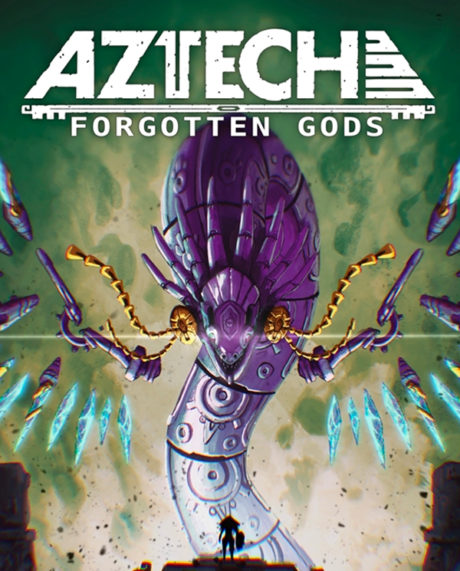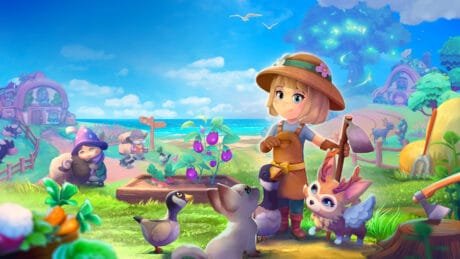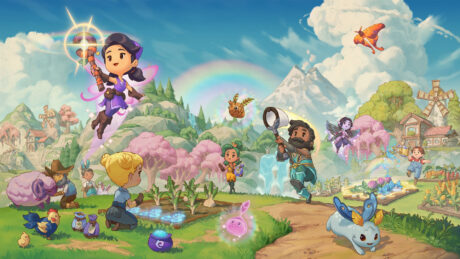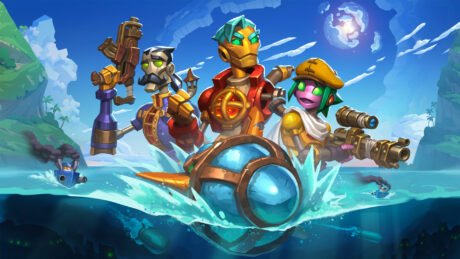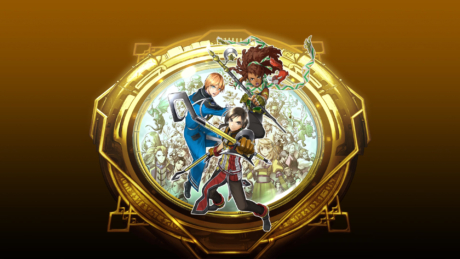Purrr....
- Storyline
- Heroine
- Pick up where you started
Hisss!
- No manual target locking
- Battling the camera
- Quality control
Platform
Switch, PlayStation 5, PlayStation 4, Xbox Series X, Xbox One, PCPublisher
LienzoDeveloper
LienzoGenre
Action, AdventurePlayers
1File Size (Minimum)
1.8 GBRelease Date (NA)
Mar 10, 2022Filed Under
With more and more games utilizing mythologies from across the globe, such as Greek, Japanese, Norse, Roman, and Chinese, Aztec lore hasn’t been getting enough attention. Lienzo studio, with its team from Chihuahua, Mexico, takes on this task with their indie game Aztech Forgotten Gods. It’s a third-person action adventure game, heavily based on Aztec history, that mixes God of War like action with sci-fi technology, creating a unique world and while offering an inspiring storyline. However, it falls short in areas that prevent it from being a solid adventure.
Uncover the Past, Save the Future
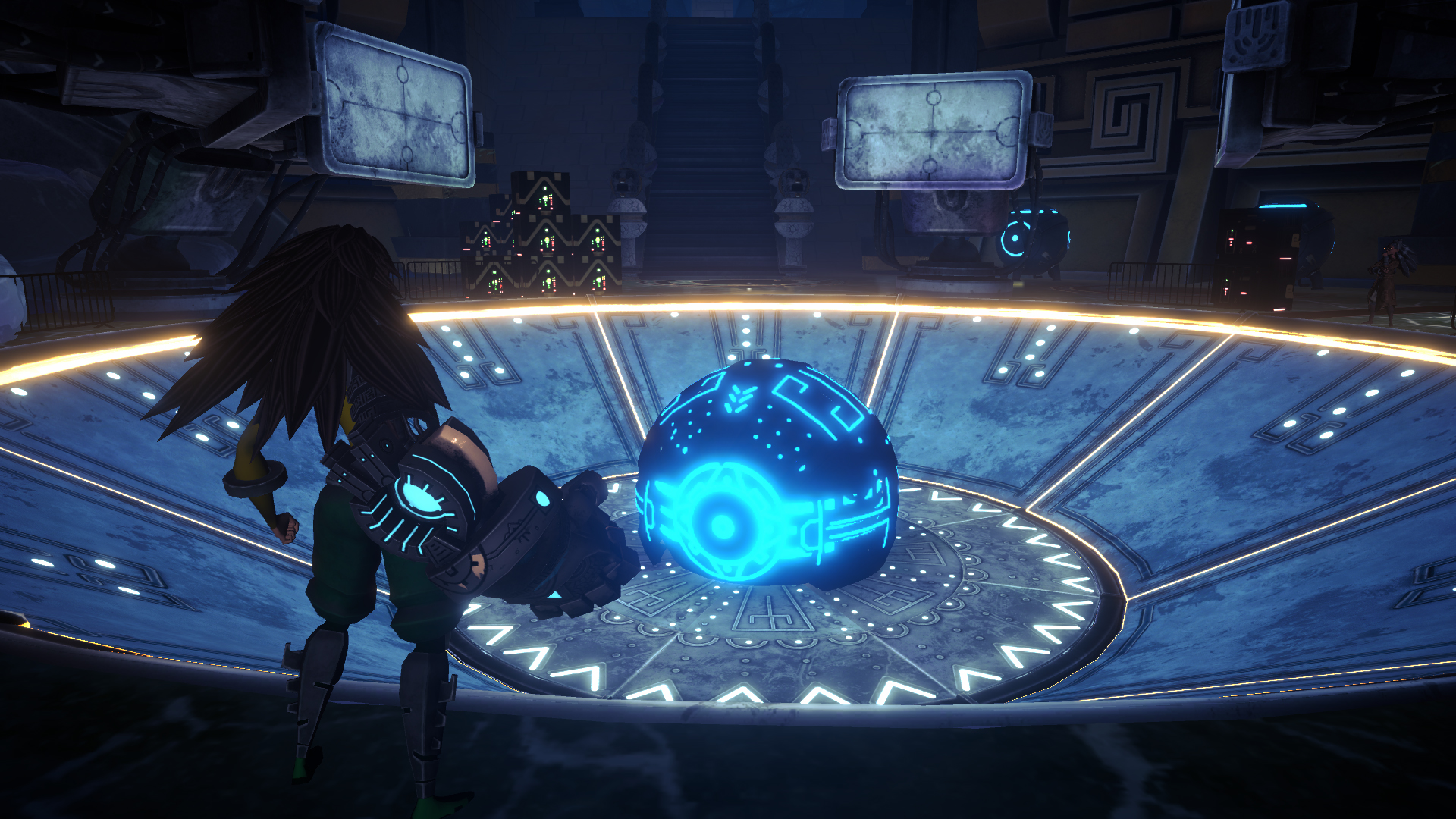
Like the God of War series using Greek mythology for its storyline and world, Aztech Forgotten Gods uses Aztec mythology for its setting and narrative. Many players will not know much of Aztec lore, but Aztech Forgotten Gods does a good job of introducing pieces of it to the player. It also focuses on just one location: a hyper-advanced civilization with Aztech temples and structures.
You play as Achtli, a young girl with a missing arm, who lives with her widowed archaeologist mother, Nantsin, in Tenochtitlan, a futuristic Mesoamerican metropolis. Years back, as a small child, Achtli and her archaeologist father visited an uncovered ancient site underground in Tenochtitlan. While touring, a large amount of rubble began to fall. To save his daughter from being crushed, Achtli’s father pushed her out of the way, dying in the process. Achtli, while safe, had her right arm crushed by the rubble. Feeling guilty about his death, Achtli tries to suppress her feelings from that day on. Then, her mother’s life-long project is suddenly canceled by the institute. Furious and confused, the two enter the most ancient of the archaeological sites to investigate the energy cores that were recently excavated by Achtli’s mother and her team. The cores have a massive amount of energy stored that could potentially power the world, making them too valuable for Achtli’s mother to pass up.
However, there’s more than meets the eye with these energy cores. Without much thought, Achtli tampers with the first energy core, causing a sudden earthquake and awakening giant creatures known as Forgotten Gods. These creatures look to take out everyone and everything in their path. It’s a dire situation, no doubt, but a weapon exists to take down these powerful beings.
The Lightkeeper
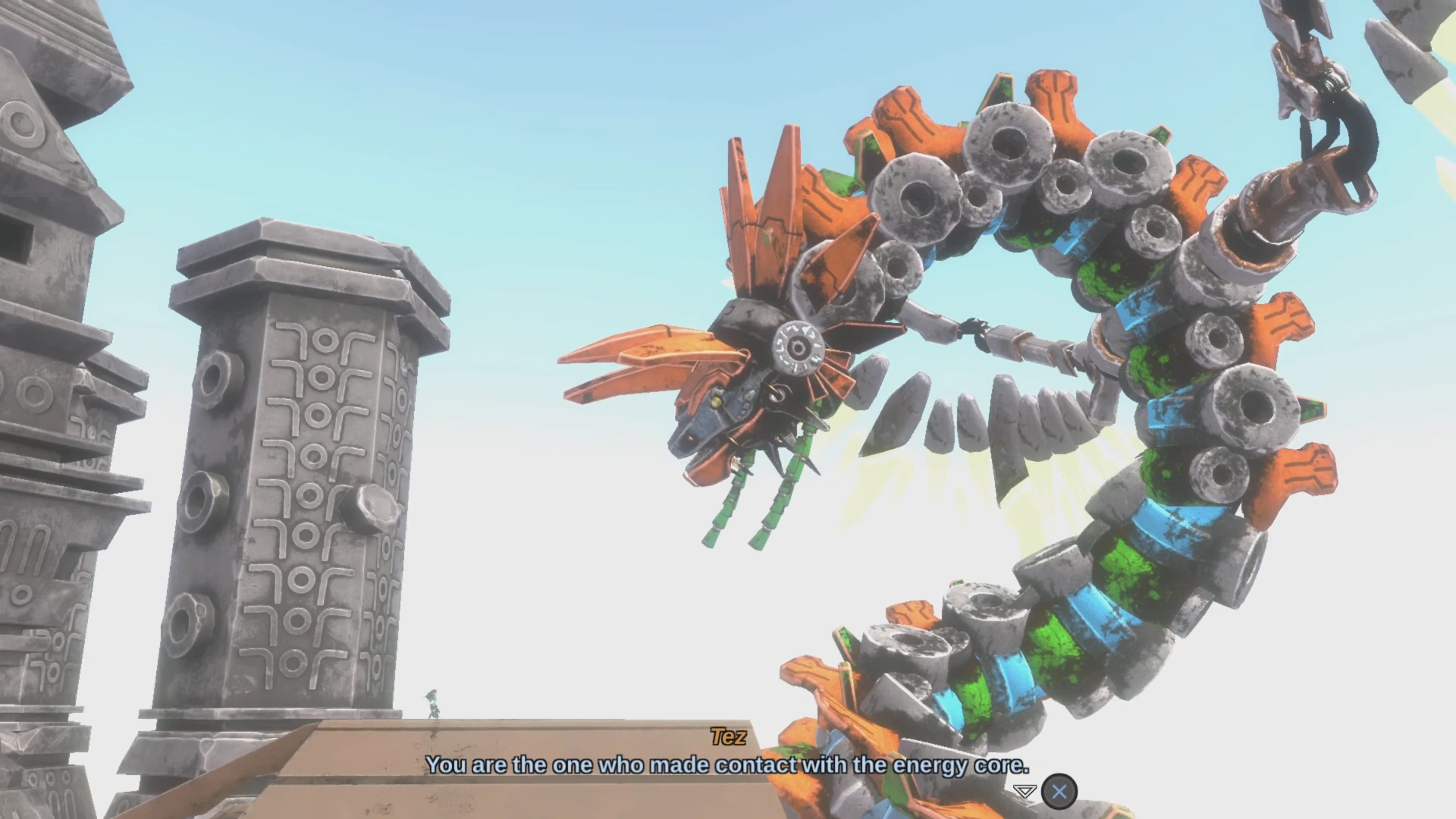
As players are introduced to the game’s mechanics, they’ll witness how the powerful ancient gauntlet called Lightkeeper is put to rest until the next “guardian” is called. Naturally, this role falls to Achtli. It’s confusing at first, but it will make sense towards the story’s end. However, players will potentially have forgotten about it by then. Speaking of which, the game’s story doesn’t hold its punches as it tackles the heroine’s tragic backstory and the events that’ll unfold. It creates a connection between the player and Achtli. The dialogue between Achtli and her friends at first is corny but picks up the pace in seriousness later in the game.
Back to the giant creatures, Achtli will have to take arms against them with the help of Lightkeeper, which replaces her missing arm. This artifact is Achtli’s main source of power to take down these Gods, letting her soar into the air and utilize its strength and skills against them. By defeating each one, Achtli becomes closer to uncovering the truth about the past between the Forgotten Gods and humans and to securing a peaceful future.
The game focuses on a single city with a few surrounding landscapes such as a volcano and an underground cavern. However, you won’t be doing any exploration in any of these areas, aside from the city itself. Instead, these giant battles come quickly, one after another, between the game’s dialogue scenes. In this way, it’s similar to the popular game Shadow of the Colossus. Beating the game will take less than eight hours to do, less than two if you’re a speed runner.
Upgrades, Baby!
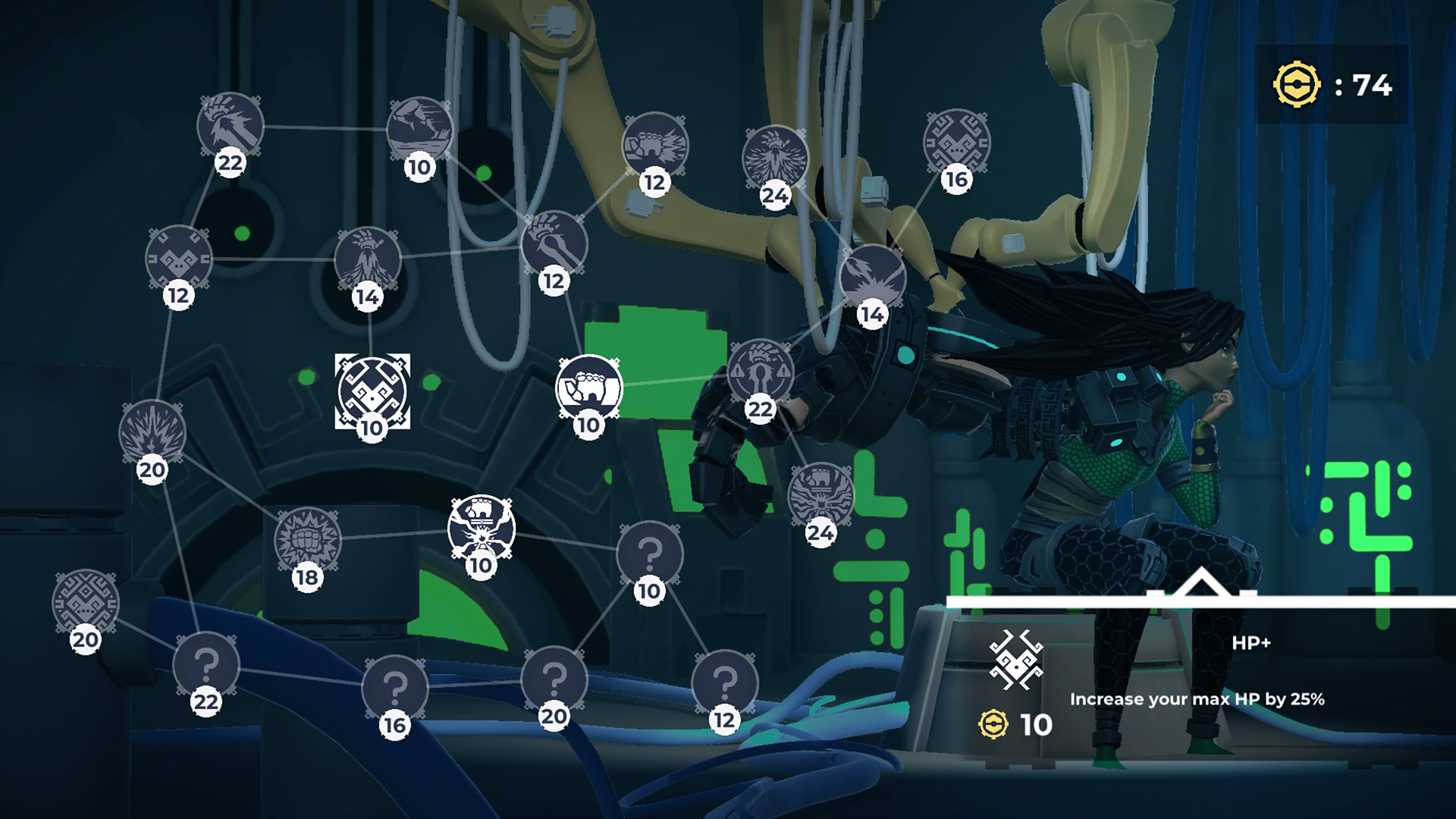
Your gauntlet is strong, but that power isn’t limitless. There’s an energy gauge for it, and it’ll deplete quickly, depending on what attack or power you use. Fortunately, regaining it is easy. You just need to stand on the ground for less than ten seconds to get it back to 100%. Moreover, the game offers upgrades to improve your power glove and its abilities.
As you play, you can enhance the stats of your gauntlet, such as increasing the size of its energy gauge. The ability to hang onto walls to help restore your gauntlet’s energy is also available to earn. To achieve these, you’ll need to spend tokens. Earning them is quite easy. Just take out random enemies across the city and during boss battles. The upgrades are based on a tree-branch structure similar to Final Fantasy X’s sphere grid but not as big.
You also earn money by defeating those random enemies, as well as by completing side quests. You can spend it on a new hairstyle if you’re not a fan of Achtli’s wild, anime-like hair or on new clothes. Though, with only a handful of things to purchase and the gauntlet power-up grid limited, you will end up wanting more to acquire. In addition, you can’t change your outfit and hairstyle outside the game’s shop. You will have to return to change your looks. It’s too bad this option isn’t available in the menu.
Take It to the Sky
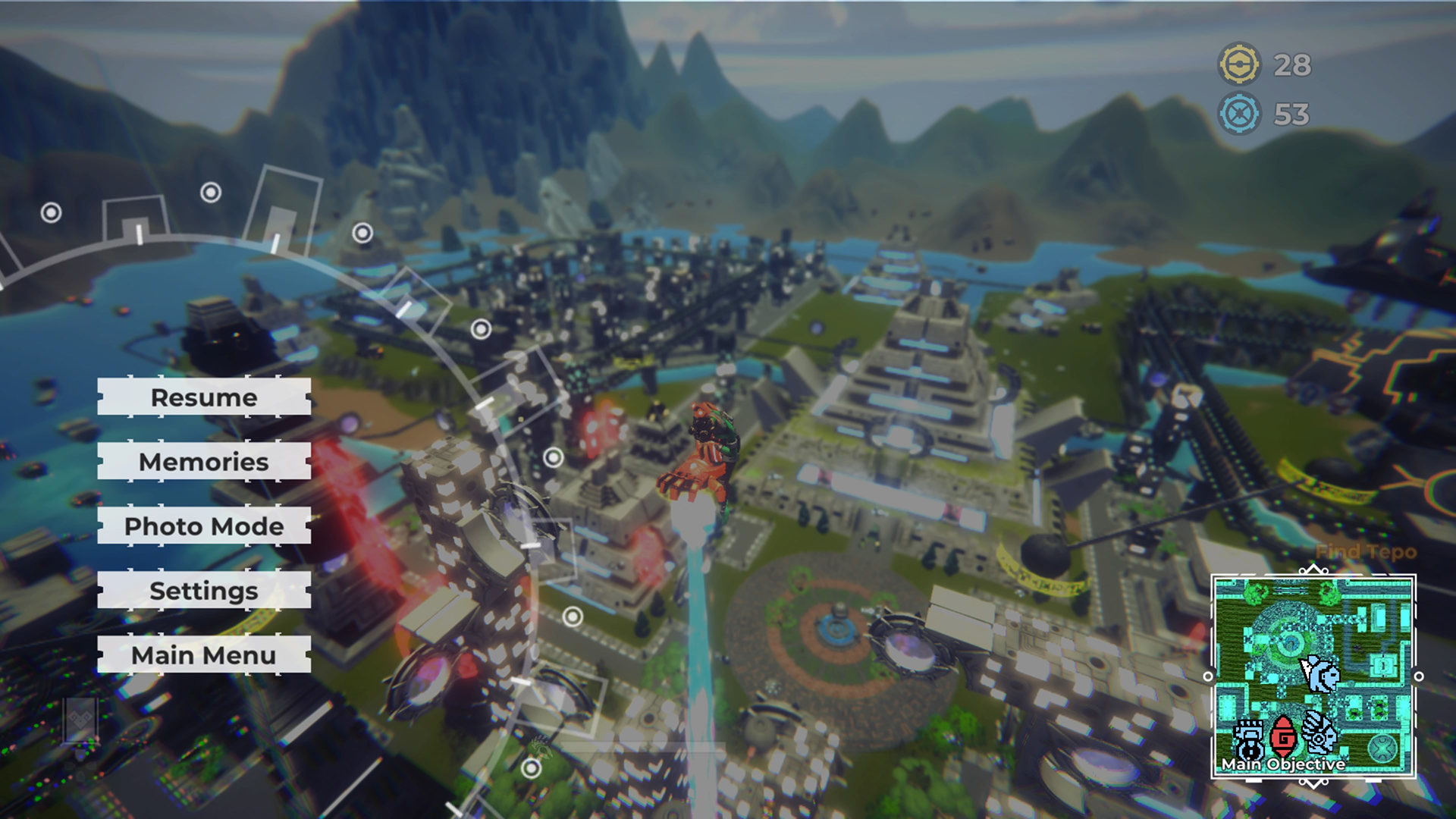
The majority of the time, you’ll engage in combat by air. Flying freely and battling does make the gameplay interesting, but controlling Achtli and the camera becomes a battle in and of itself. It’s one thing to navigate by air around giant creatures that take a large amount of screen space, but having to move the camera manually while fighting is another. Maneuvering between the two without taking damage is no small feat. There is an option to adjust the camera’s sensitivity, if nothing else, which helps a certain amount.
Additionally, controlling Achtli through the air is challenging in tight spots, since the response to make quick turns or quick deliveries for attacking becomes frustrating. The game offers automatic targeting of enemies, but it only changes depending on what you are looking at and the distance. There’s no auto lock and no changing targets manually, which would make combat much more manageable. Aztech uses quick time events to add cinematic moments to battles. The majority of the time, these button commands appear during decisive moments in battle against the giants. It adds an interactive depth, but it feels more cinematic with the final boss than the others.
Do What Now?
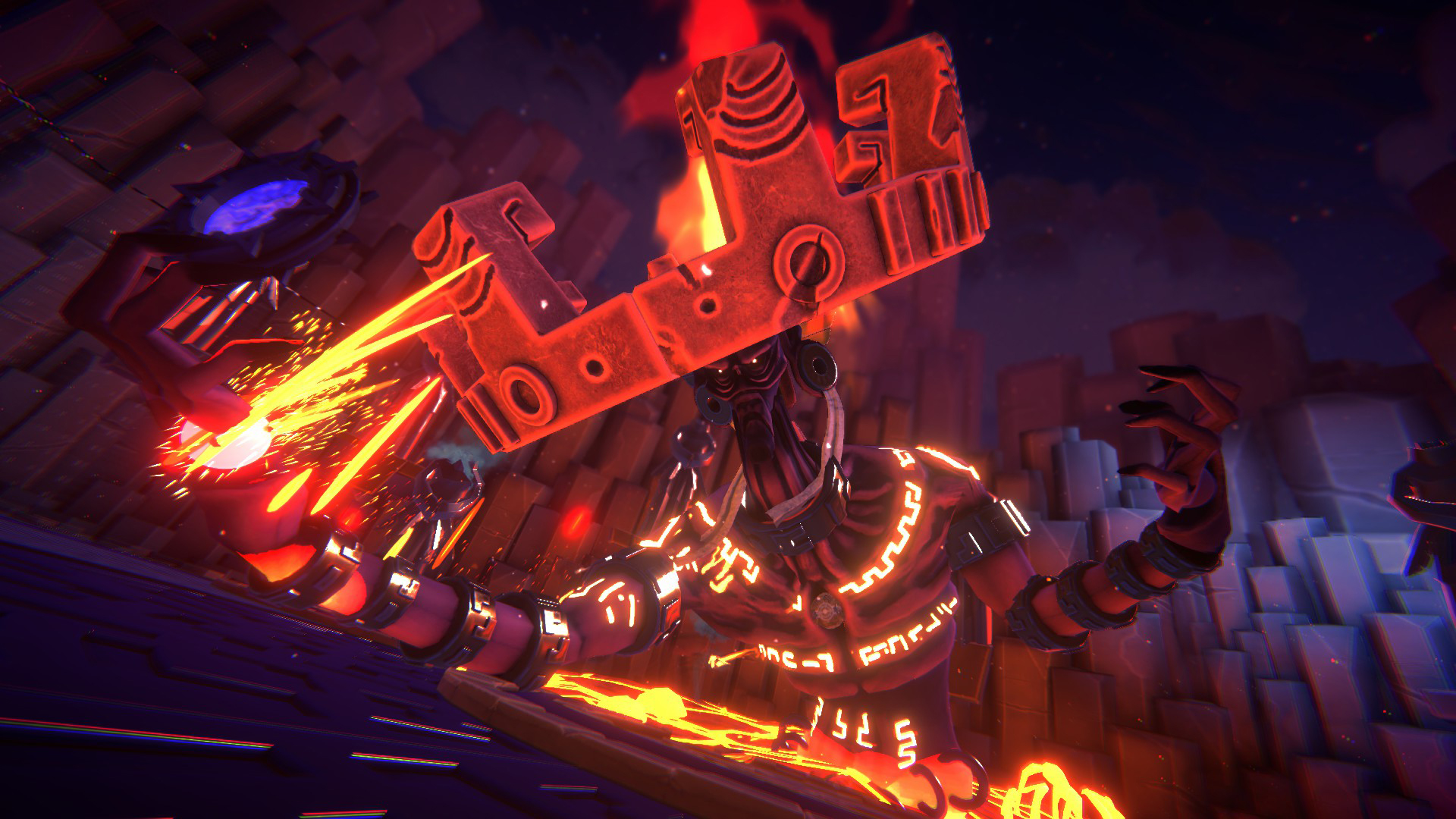
The God battles are fun when you know what to do. In many of these battles, the game doesn’t offer much, if anything, as to how to take these giant creatures down. Those who’ve played Shadow of the Colossus will be right at home. Players will have to explore the battle area to find clues, and test theories on how to take down a God. Remember: the auto target isn’t available. Players will have to get up-close and adjust their cameras to figure out what to do. Yes, there is a tip located above the map, but that’s more for the next story destination.
That’s not all; these giants will change up their strategy three times to throw you off. Their weaknesses mostly remain the same, but don’t be surprised if you perish a few times figuring things out to get to it. The positive spin during your battle is that you don’t start at the beginning of the fight when you do. Instead, you pick up where you left off, including the opponent’s remaining health bar. Additionally, the game offers a healing technique that’ll regenerate your health bar. Once finished, your healing skill is set to cool down mode.
Depending on the game mode, you’ll receive a fair amount of health back. For instance, in easy mode, players can heal 70% of their total health, 40% on normal, and 20% on hard. Additionally, damage changes between difficulty settings. If you’re up for a challenge, give the hard mode a try. Select easy mode if you’re looking for a quick playthrough to understand the game’s mechanics and to figure out each giant’s weaknesses. The ending is the same regardless of what mode you pick, so choose whichever you are comfortable playing. Conveniently, changing the difficulty mode can be swapped anytime during the game by going to the settings in the menu.
Back in the 2000s
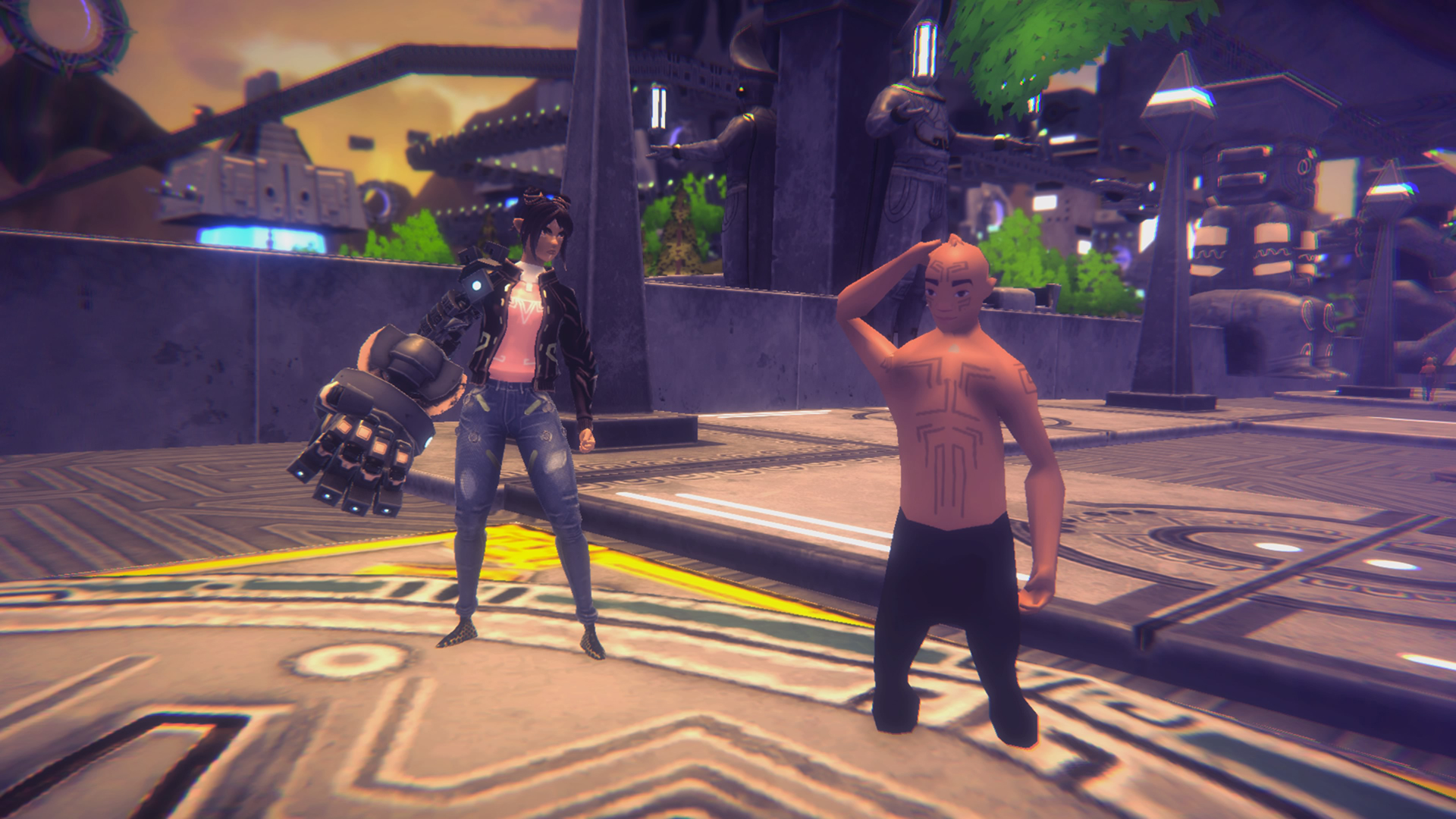
The indie game’s graphics mostly focuses on the heroine, Achtli, a couple side characters, and the multiple God battles. (The mechanical serpent named Zet has an interesting design that resembles a creature you would fight on the PlayStation’s Horizon games.) Outside of that, the graphics and textures look dated and won’t be up to par with other 3D-environment indie games such as Solar Ash. Instead, the visuals resemble a PlayStation 2 game but in HD.
The dated graphics certainly don’t help with the game’s overall look. Even if the game’s generic citizens aren’t important, their 3D model and plastered basic skin hurt the general visual presentation. Also, at times, Achtli looks like she’s absorbed into buildings, or characters’ hands push through objects like a book during a dialogue. The hexagon pattern used on the interactive rails that Achtli can use looks off, as if the pattern was plastered on as a static background wallpaper. When Achtli is moving quickly on the rails, it’s more noticeable how weird it feels. The repetitive character animations during the story’s dialogue doesn’t help either, making it awkward and dated.
The majority of the game’s soundtrack is played during each God fight, where it’s mostly heavy metal type music. When exploring and engaging in dialogue, nothing plays except sound effects. There are no voiceovers either, except for a few short words, grunts, and sighs. Some of the character noises become overused really quick.
The game’s map comes in handy, but you cannot enlarge it. That makes it tougher if you’re looking for timed fights and racing areas. The menu is simple but can use tweaking. For example, highlighted areas are tough to see like when comparing a list of white buttons and a glowing white button. Better yet, add the larger map on the menu screen to make interactive spots easier to find. Dialogue text consists of simplistic white or colored letters with drop shadows. Since the game is set in a Mesoamerican future, it would have been interesting to see some of that reflected in the designs of dialogue boxes and other menu elements.
The game also features a photo mode that covers the standard commands and is relatively easy to use. It doesn’t come with different modes, such as monochrome or black-and-white filters. You can’t snap a photo during a cutscene either. Still, it’s there and it works fine.
The Final Punch
Ultimately, Aztech Forgotten Gods is a decent outing with its intriguing heroine and equally intriguing world of massive boss fights. It certainly has the potential to be a great game, but its graphics and gameplay mechanics need more refinement before it can reach that level. For now, these gods risk being forgotten again.
A PlayStation 5 code was provided for this review and gameplay footage.
